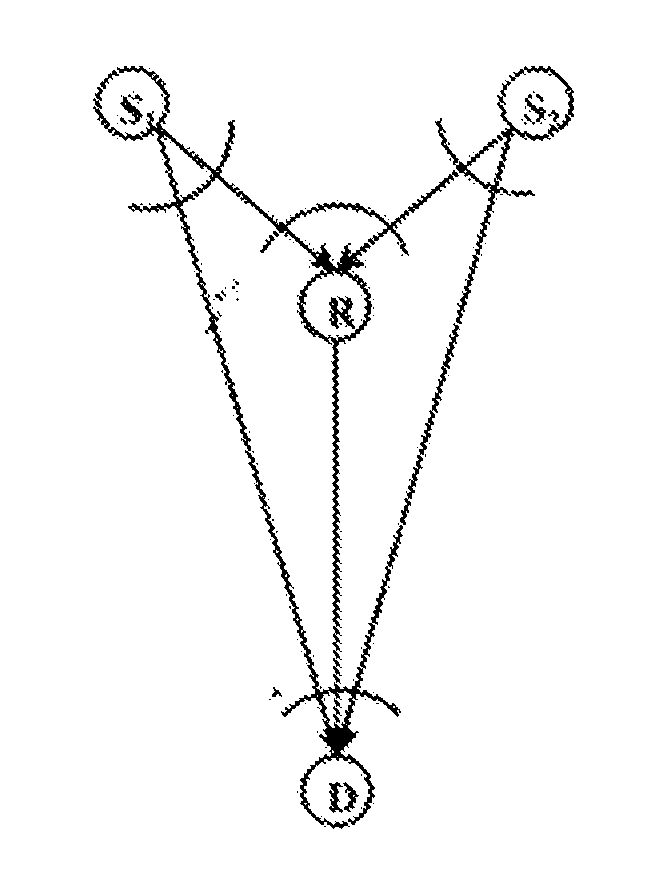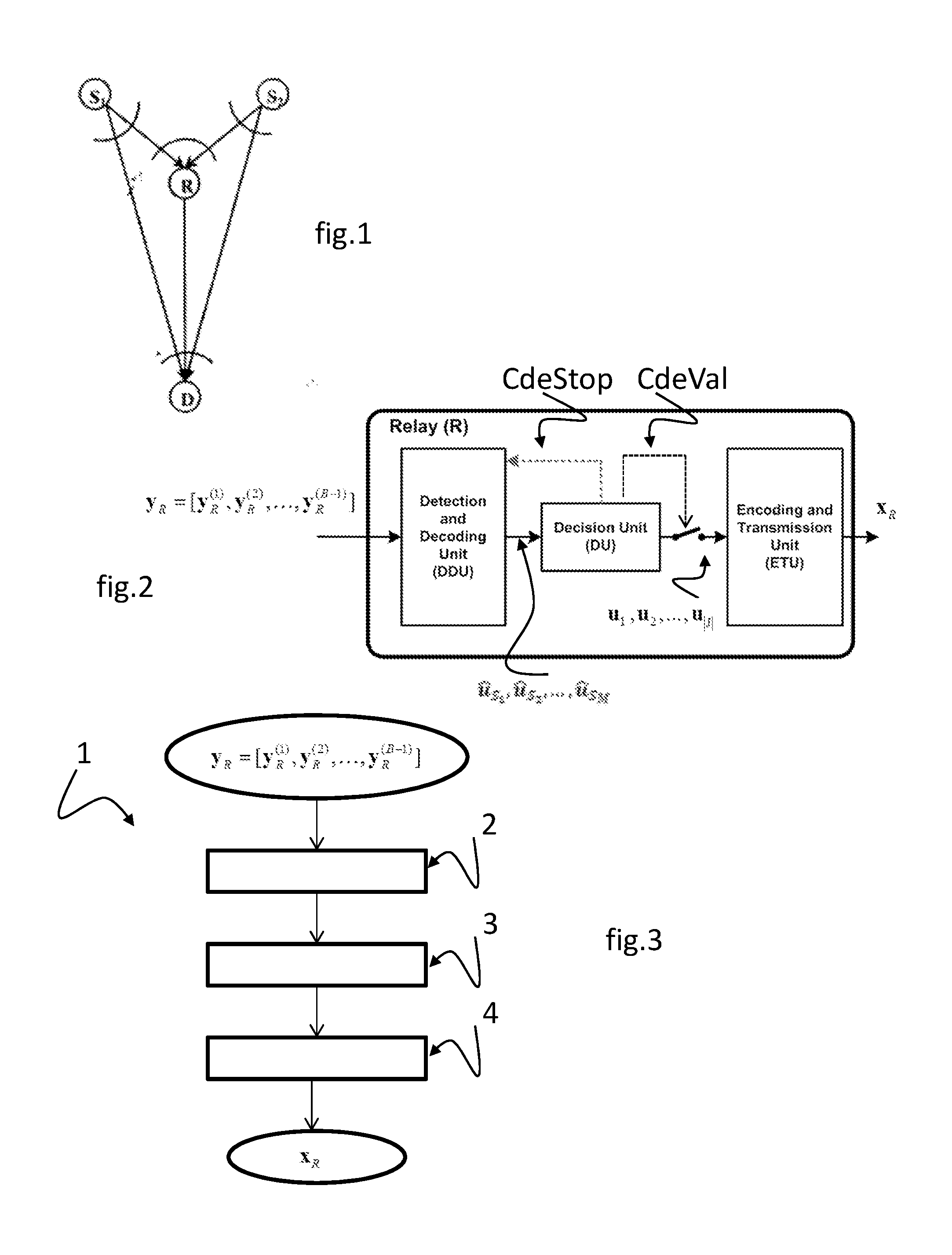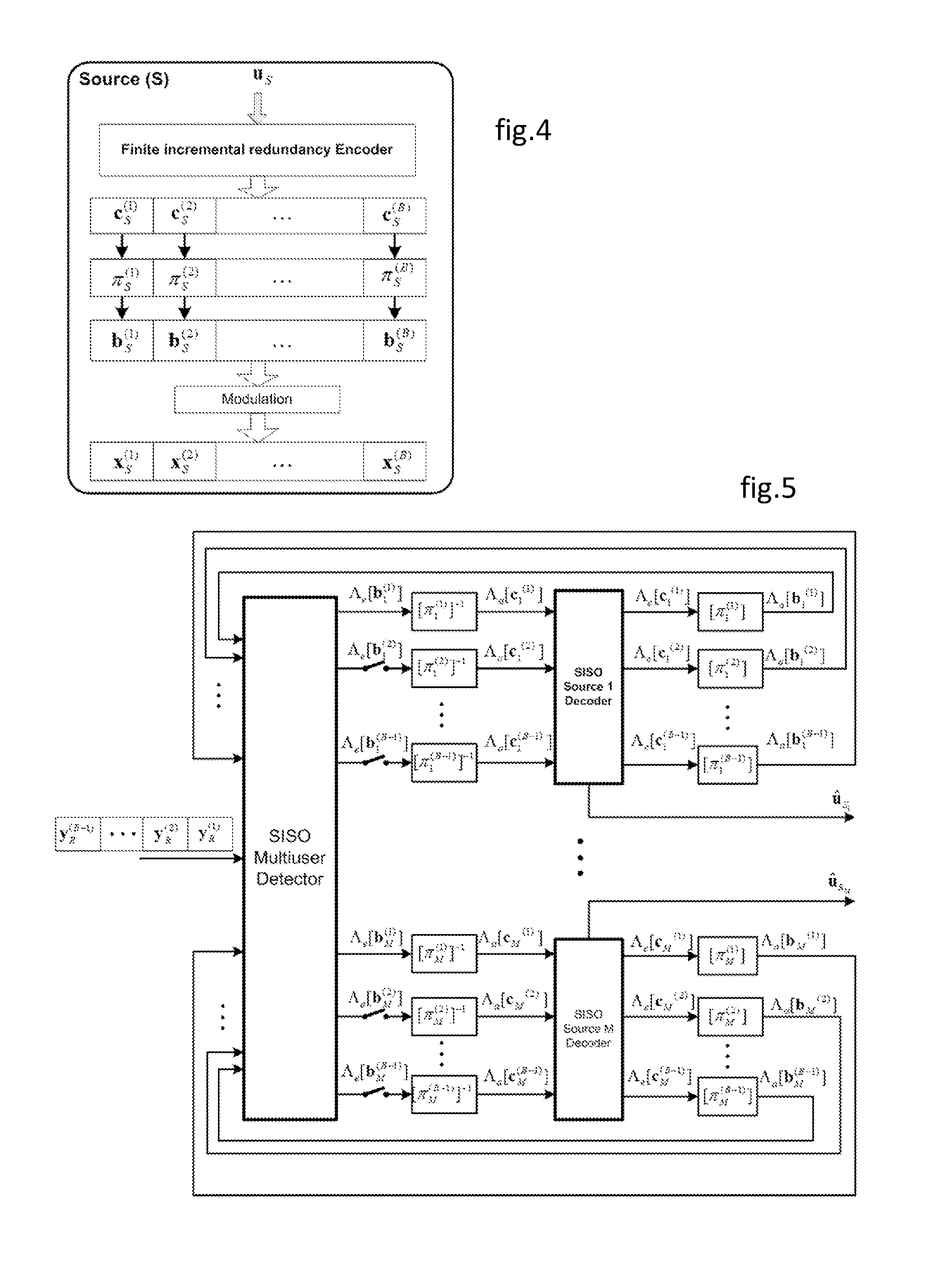Method for transmitting a digital signal for a marc system with a plurality of dynamic half-duplex relays, corresponding program product and relay device
a relay channel and relay technology, applied in the field of network coding, can solve the problems of reducing the coverage and thus the capacity of the system, difficult transmission channel of a mobile network, and reducing the probability of being able to transmit encoded data
- Summary
- Abstract
- Description
- Claims
- Application Information
AI Technical Summary
Benefits of technology
Problems solved by technology
Method used
Image
Examples
Embodiment Construction
[0069]There is no constraint on the transmission channel; it may be subject to fast or slow fading, it may be frequency selective, and it may be a multiple-input and multiple-output (MIMO) channel. In the description below, it is assumed that the nodes of the MARC system are accurately synchronized and that the sources are independent (there is no correlation between them).
[0070]The invention lies in the context of a MARC system having M sources S1, S2, . . . , SM, one or more relays R, and a destination D. The sources and the relays are assumed to be provided with respective single transmit antennas in order to simplify the description. It should naturally be understood that the sources and the relays could be provided with respective pluralities of transmit antennas. The relays and the destination are assumed to be provided with respective single receive antennas in order to simplify the description, but it should naturally be understood that they may be provided with respective p...
PUM
 Login to View More
Login to View More Abstract
Description
Claims
Application Information
 Login to View More
Login to View More - R&D
- Intellectual Property
- Life Sciences
- Materials
- Tech Scout
- Unparalleled Data Quality
- Higher Quality Content
- 60% Fewer Hallucinations
Browse by: Latest US Patents, China's latest patents, Technical Efficacy Thesaurus, Application Domain, Technology Topic, Popular Technical Reports.
© 2025 PatSnap. All rights reserved.Legal|Privacy policy|Modern Slavery Act Transparency Statement|Sitemap|About US| Contact US: help@patsnap.com



